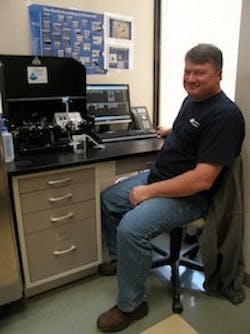Imaging Analysis Protects Colorado Drinking Water From Algae, Invasive Mussels
Source Fluid Imaging Technologies Inc.
After a surprise algae bloom impacted the taste and odor of the drinking water in the city of Westminster, Colo., before any of the testing procedures could detect its presence in the source water, chemist Kelly Cline investigated other approaches for detecting and identifying algal cells to prevent future taste and odor events.
Replacing the manual microscopy process that often required months for the data to become available, Cline recommended purchasing the automated FlowCAM particle imaging and analysis system from Fluid Imaging Technologies. Combining the high-quality imaging of microscopy with the high speed of flow cytometry, the system automatically takes high-resolution, full-color digital images of individual particles and microorganisms; measures dozens of parameters such as size, length, width, shape, ESD and fluorescence in real time; and saves the images and data for analysis.
Clicking these images on screen reveals the corresponding data while built-in, proprietary pattern recognition software automatically matches detected cells against libraries of known nuisance algal cells for instant, automated identification.
“The system is much, much faster than our old manual tests," Cline said. "We can run much larger samples and accurately detect even very sparse populations of algae. Now I can have an algae count and a report to management in less than 30 minutes.”
In addition, Cline found the system equally effective for detecting, counting and identifying invasive mussel veligers using the same water sample processed only once. Able to manage large volumes of water, the imaging particle analyzer automatically detects zebra, quagga and other aquatic mussel veligers for 100% confirmation of their presence.
“Thankfully, we haven’t found any yet, but it just makes sense to look for them while we’re already checking for algae,” said Cline, “We’ve had great success with the system, and if everyone responsible for drinking water quality would use it, then our science would be a lot better and so would confidence in the public water supply.”
Source: Fluid Imaging Technologies Inc.
